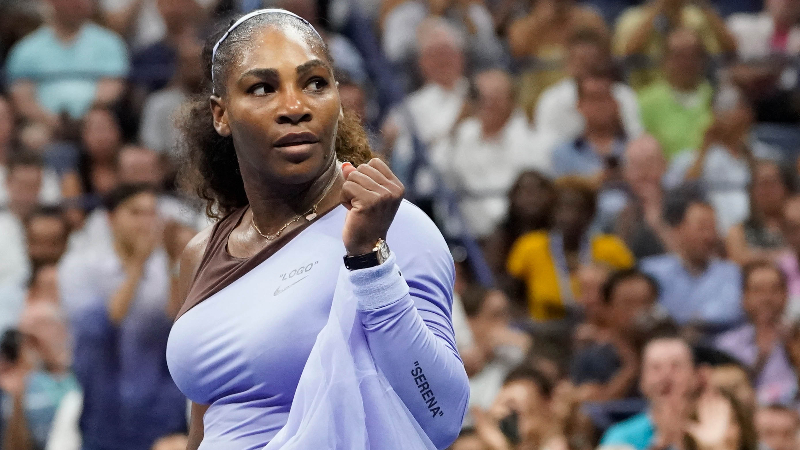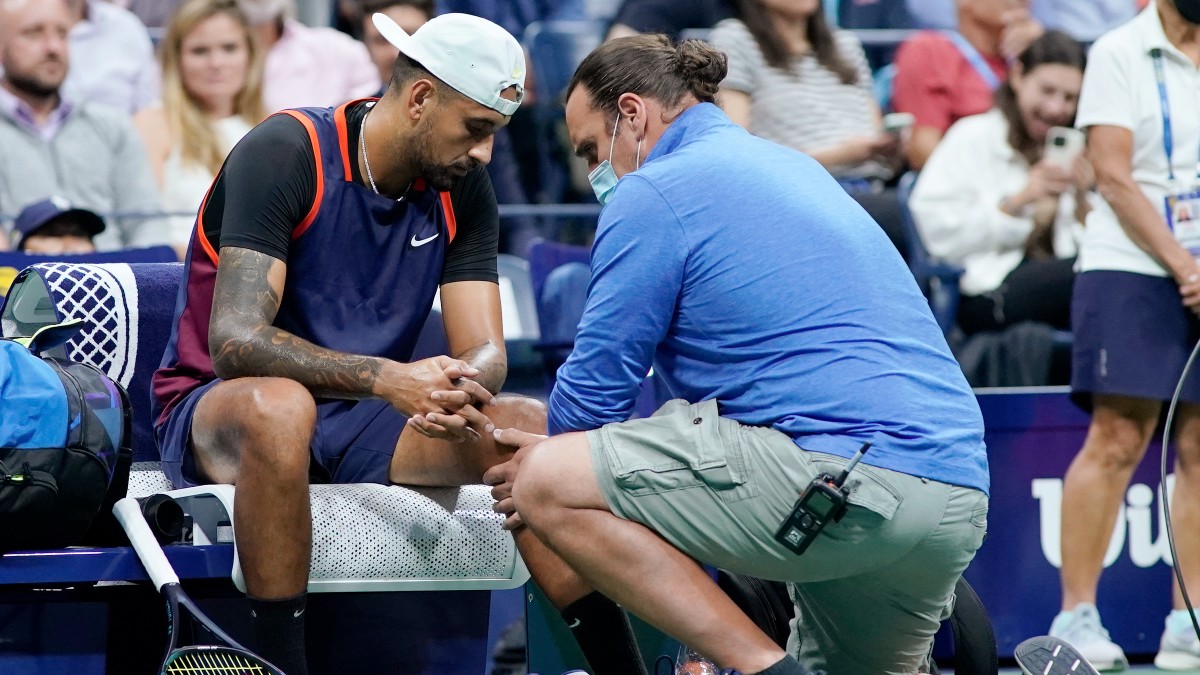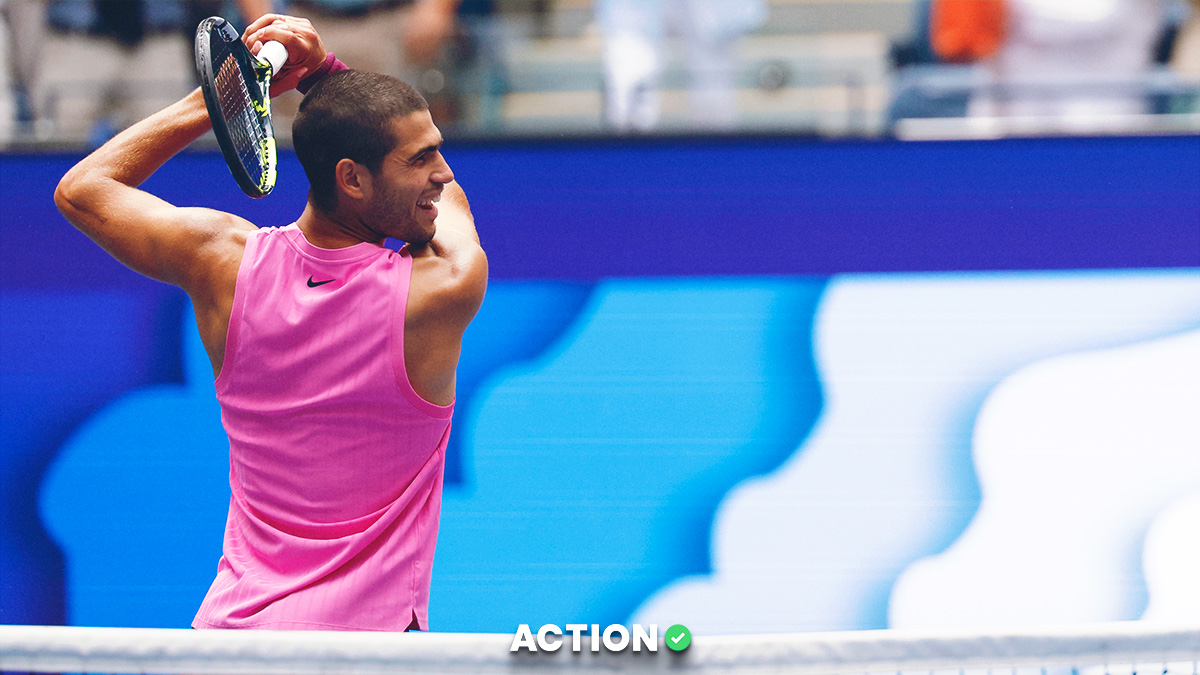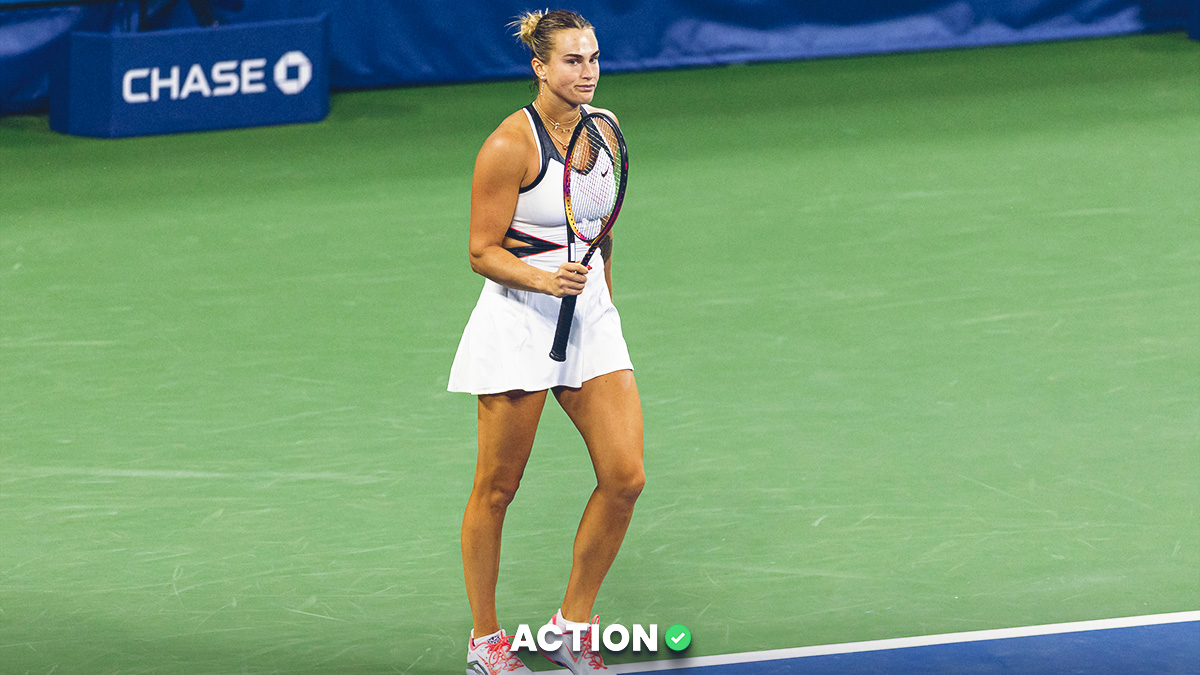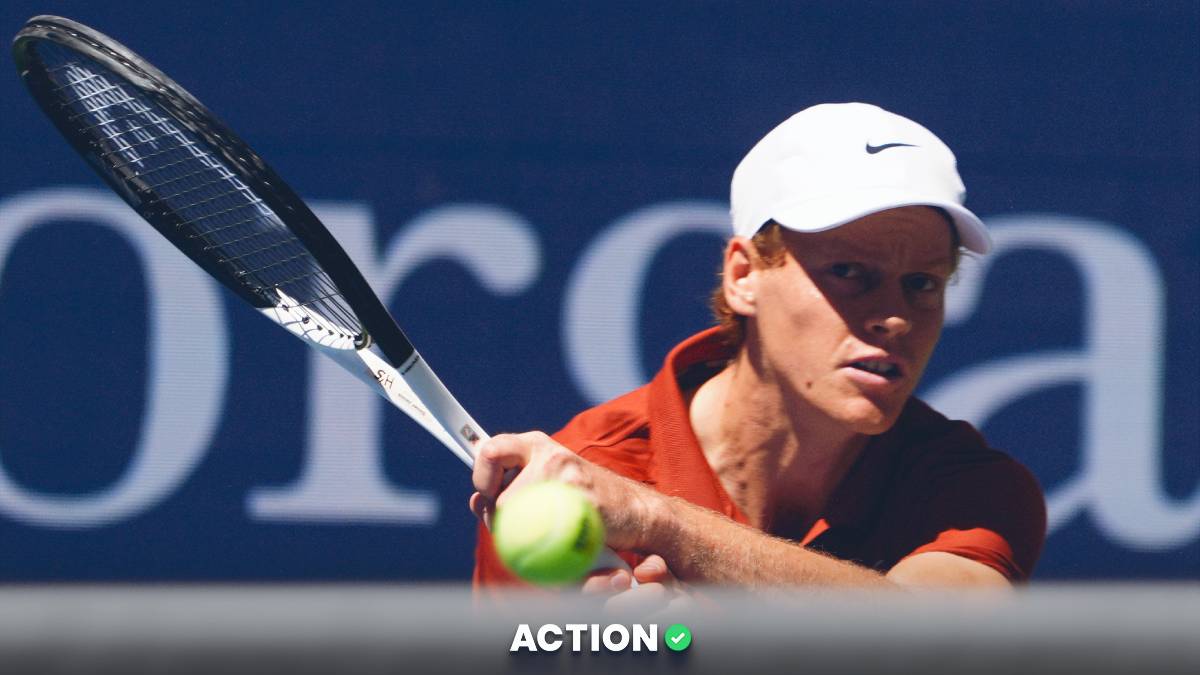Ahead of the upcoming Wimbledon Championship, The Action Network analyzed more than 50 years’ worth of data on prize money differences between male and female Grand Slam champions. We crunched the numbers and determined how much more (in today’s currency) female champions would have made if they were paid the same as their male counterparts for every singles Grand Slam title.
The analysis covered over 400 male and female singles champions and their prize money from all four Grand Slam events (Wimbledon, French Open, US Open, and Australian Open). First, the prize money for male and female champions was compared year by year to calculate the annual difference, which was then converted to today’s money. For players who won multiple titles and were paid less each time, these amounts were summed up to estimate how much more they could have had in today’s currency if they had always received equal pay.
When examining the different Grand Slams (focusing on singles events only), the US Open began paying men and women equally in 1973. The French Open didn’t pay them equally until 2006, while Wimbledon didn’t start paying the male and female champions equally until 2007.
An interesting case is the Australian Open which first paid players equally in 1984. However, until 2000, they had a varying payment structure — some years they paid the players equally, others not. Some years, they even paid women more until they committed to equal pay for both men and women in 2001. The fluctuations were allegedly due to inconsistent policies, economic pressures, and efforts to attract top players.
Biggest Prize Money Gaps: Top 5 Female Players Who Missed Out the Most
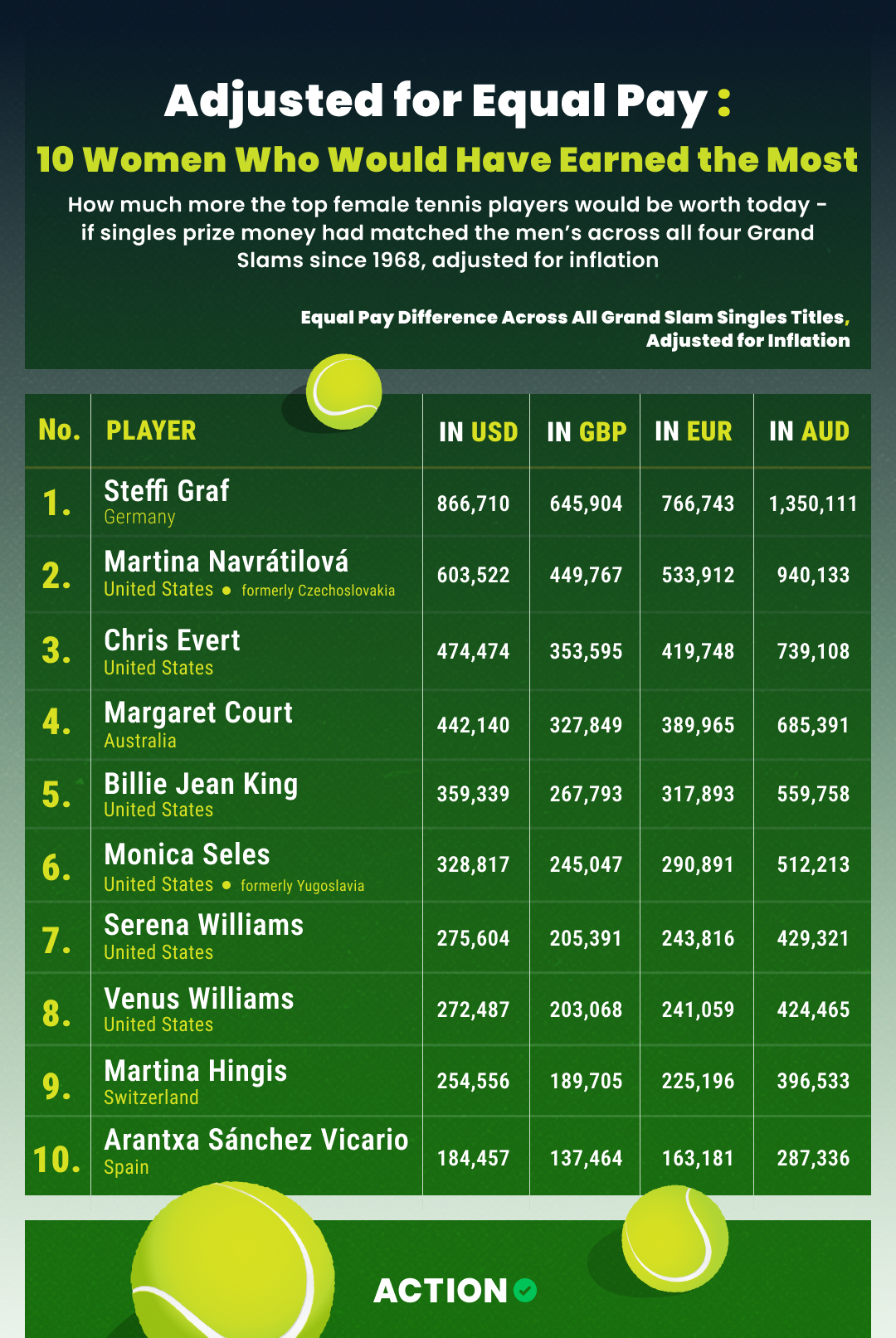
No. 1 — STEFFI GRAF
According to the analysis results spanning from 1968 to the present, Steffi Graf (Germany) is the top player who has missed out on the most money due to the differences in prize money between men and women. She would have had 866,000 USD more had she been paid equally. When looking only at Grand Slam singles championship events, she was paid less than her male counterparts 15 times.
Wimbledon is the event where Steffi Graf missed out on the most money: 415,000 GBP, followed by Roland-Garros, where she would have earned 249,000 EUR more, and the Australian Open, where she would have earned 41,000 AUD more.
No. 2 — MARTINA NAVRÁTILOVÁ
In second place is Martina Navrátilová (United States/formerly Czechoslovakia), who would have had 603,000 USD more had she been paid the same as her male counterparts. When looking only at Grand Slam singles championship events, she was paid less than her male counterparts 13 times.
Wimbledon is the event where Martina Navrátilová missed out on the most money: 274,000 GBP, followed by Roland-Garros, where she would have earned 129,000 EUR more, and the Australian Open, where she would have earned 138,000 AUD more.
No. 3 – CHRIS EVERT
In third place is Chris Evert (United States), who would have earned 474,000 USD more had she received the same prize money as her male counterparts. When looking only at Grand Slam singles championship events, she was paid less than her male counterparts 11 times.
Roland-Garros is the event where Chris Evert missed out on the most money: 279,000 EUR, followed by the Australian Open, where she would have earned 124,000 AUD more, and Wimbledon, where she would have earned 58,000 GBP more.
No. 4 – MARGARET COURT
In fourth place is Margaret Court (Australia), who would have had 442,000 USD more if she had been paid equally to male champions. When looking only at Grand Slam singles championship events, she was paid less than her male counterparts 10 times.
The US Open is where Margaret Court missed out on the most: 188,000 USD, followed by the Australian Open with 173,000 AUD, Roland-Garros with 96,000 EUR, and last but not least, Wimbledon, where the pay difference in today’s currency was 23,000 GBP.
No. 5 – BILLIE JEAN KING
In fifth place is Billie Jean King (United States), who would have earned 359,000 USD more had she received equal prize money. When looking only at Grand Slam singles championship events, she was paid less than her male counterparts on 9 occasions.
The US Open is the event where Billie Jean King missed out on the most: 192,000 USD, followed by Wimbledon, where she would have earned 99,000 GBP more, and Roland-Garros, where she would have earned 29,000 EUR more.
REMAINING TOP 10
When examining the top 10 players who would have earned the most had they been paid the same as their male counterparts, Monica Seles (United States/former Yugoslavia) is in sixth place, earning 328,000 USD. In seventh place, Serena Williams (United States), who would have had 275,000 USD more, followed by Venus Williams (United States) in eighth place, who missed out on 272,000 USD. Martina Hingis (Switzerland) ranks 9th, with a difference of 254,000 USD. In 10th place, Arantxa Sánchez Vicario (Spain) would have had 184,000 USD more had she been paid equally.
To see the breakdown of the top 30 female players who missed out on the most money from their Grand Slam singles victories, have a look at the tables below. The tables highlight how much the players missed out on per specific event (in local currencies), as well as a summary of how much the players missed out on in total. All values are adjusted for inflation and converted to USD, GBP, EUR, and AUD.
You can also have a look at our Fanatics Sportsbook Promo.
METHODOLOGY
- The data was collected and analyzed in May 2025.
- The analysis spans 1968 – 2025, and it includes all four Grand Slam events (Wimbledon, French Open, US Open, and Australian Open), focusing on the singles champions, male and female, totaling 400+ winners (with some of them appearing multiple times if they won on multiple occasions).
- The data includes all male and female winners and their earnings for Grand Slam singles Championship events except for years when certain events did not take place (Wimbledon 2020, Australian Open 1986) and rare occasions where data for female earnings was missing (Australian Open 1968, 1977).
- The difference in prize money was first counted in its original value, after which a formula was applied in order to get an equivalent value of how much money that would be in today’s money. So, for example, in 1968, Billie Jean King won 750 GBP for winning the Wimbledon Women’s Singles event, while Rod Laver won 2,000 GBP for winning the Wimbledon Men’s Singles event. The difference in prize money for winning Wimbledon was 1,250 GBP, which would be approximately 22,169 GBP in today’s money according to the formula.
- The formula used for today’s money value: Today's money = Prize money × (Consumer Price Index in 2024/CPI in the original year one is adjusting from).
- Since France used the FRF until 2002, values were initially collected in FRF and then converted to EUR. They were then subsequently transferred to today's value. However, only EUR can be seen in the tables above to avoid more confusion.
- Sources of data collection: Wikipedia.org, Github.com, ATPTour.com, DB4Tennis, TheTennisBros.com, Wimbledon.com, USOpen.org, Perfect-Tennis.com.


